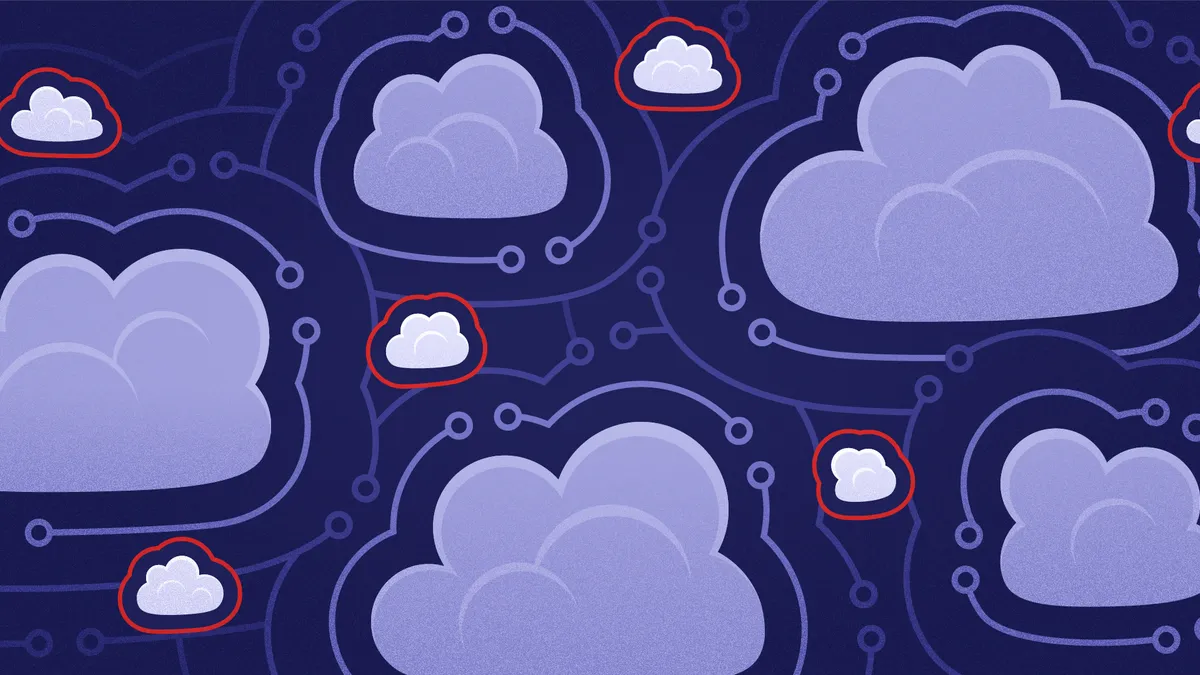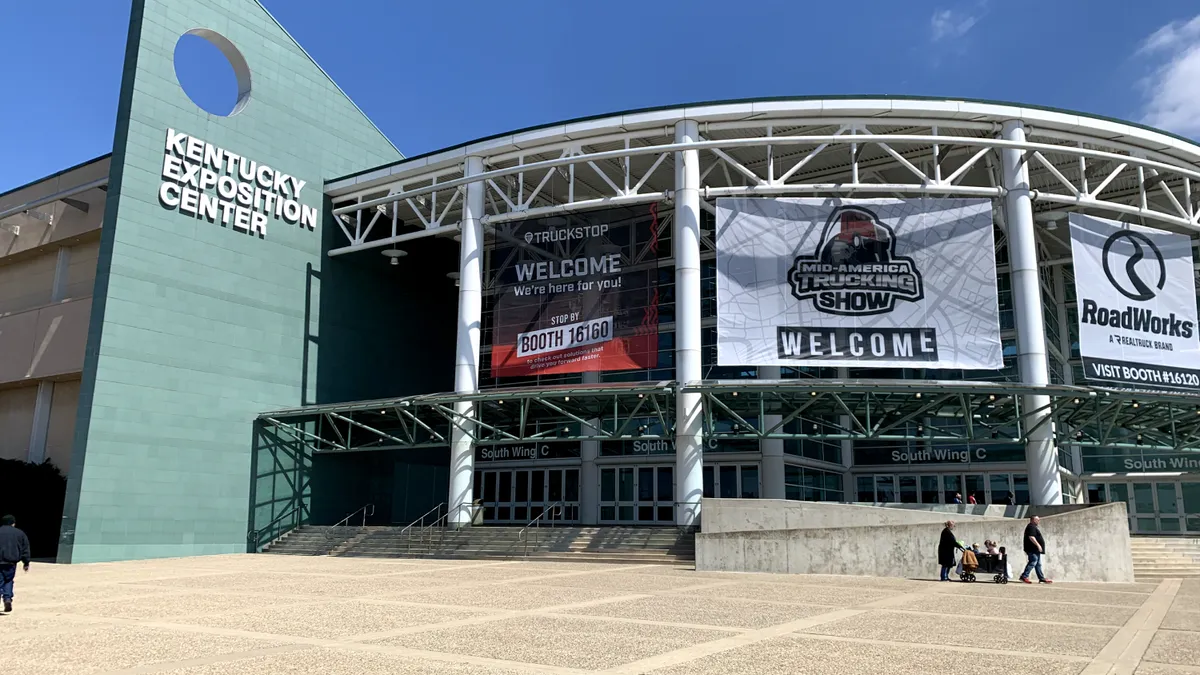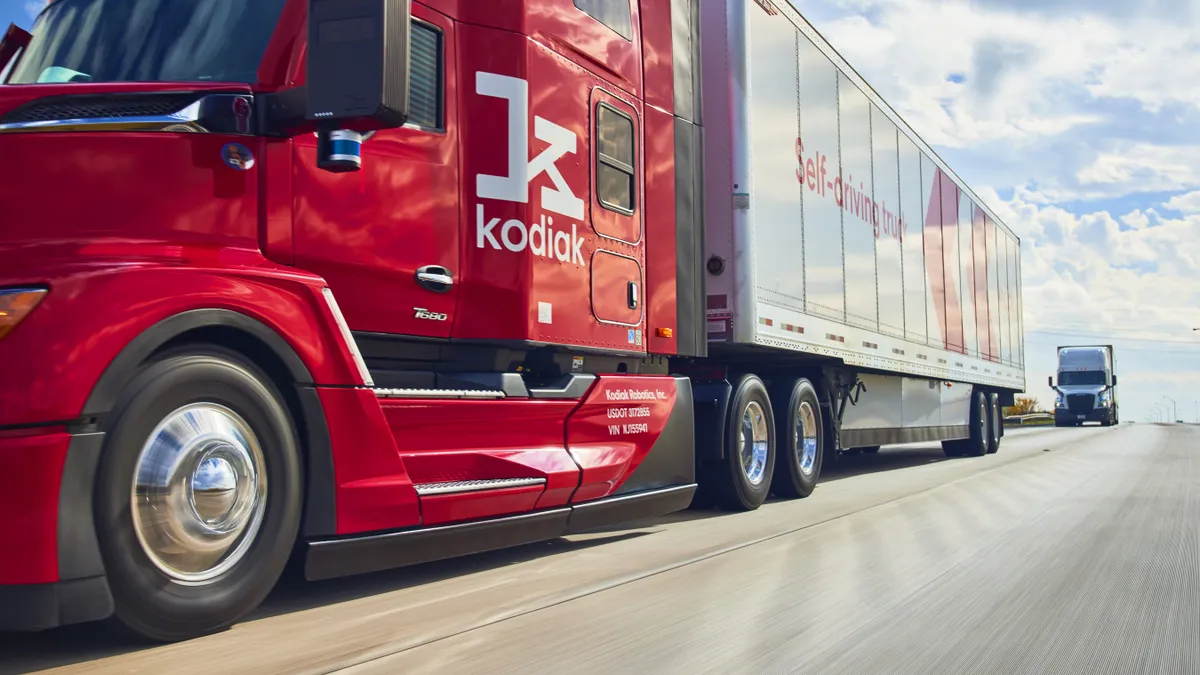In February, J.B. Hunt announced a partnership with Google Cloud to expand J.B. Hunt 360, a digital platform that acts as a broker, connecting shipments and available capacity. This is an excellent example of platform-as-a-service, when an organization outsources its technology assets, such as hardware, cabling and information technology personnel.
PaaS is like truck leasing: The function is still up to you, but someone else owns the asset.
Not sure you’re ready to go that far? Consider software-as-a-service.
SaaS is when an organization chooses to move selected applications from its own server to the cloud, i.e., someone else’s data center. Going back to the analogy, it's like outsourcing to a third-party logistics company: You pay a monthly fee and someone else owns the asset and manages the function.
In a nutshell, the PCMag Encyclopedia defines "cloud" as "hardware and software services from a provider on the internet." We’ll focus on the SaaS segment.
The difference between on premise and the cloud is like listening to CDs versus getting music from an online subscription service.

If you’ve been a business leader in freight for some time, you’re probably familiar with using applications developed to be installed on a server onsite. This is "on premise," and it is rapidly becoming old school.
The difference between on premise and the cloud is like listening to CDs versus getting music from an online subscription service.
Many vendors that serve the freight technology market still use on premise, but some have made the leap to native web/cloud architected solutions.
The question you need to ask yourself is whether you should be content listening to CDs, so to speak, when you could have access to a more in-depth online subscription service.
Key considerations
A transportation management system — which can cost millions of dollars and take years to implement — is a far cry from enjoying a few tunes.
But the foundational benefits of taking advantage of the cloud are similar, even if there are a lot of serious considerations to understand before you take the plunge. Here are six of them:
Timing
Because virtually all software providers are moving to the cloud, if you’re "migrating," not starting from scratch, you should consider (and budget for) reimplementation of the software.
Also be aware the cost of the subscription-based license is sunk, once you move to SaaS. So, you’ll likely pay the same transaction fee as a net new customer.
Scaling
Cloud options are easier to scale up/down, though costs become highly variable instead of fixed, which makes budgeting more difficult.
Pricing is largely transactionally based, which can be a design consideration. For example, you choose to keep parcels out of the system, as the transaction volume would dramatically increase costs.
Cost of ownership
Over the long term, the cloud (specifically SaaS) likely has a lower total cost of ownership, due to avoiding large upgrade costs — though a good percentage of those fees are baked in and amortized in your monthly fee.
A subscription agreement may be three to five years. At its end, the vendor may want to renegotiate transaction fees. It's recommended to have language in your contract that limits how much they can be raised — perhaps tied to the Consumer Price Index or another metric.
These systems are difficult to implement and replace, so the SaaS providers know they have leverage over you.
Loss of control
With cloud, you are essentially moving some of the IT infrastructure and supporting functions to a third party, so you need to be sure to control your data (and access to it).
Be aware that instead of contacting your peer in IT to initiate a request, you're likely pinging a third-party "support" group and are in someone else's queue.
Data access and usage
Ensure the vendor knows you own your data. In the cloud world, you don’t get access to the underlying data schema to pull data as you see fit.
Thus, you should negotiate upfront to get unfettered access to your data that includes scheduled (all data sent weekly) and ad hoc requests (creating a one-time report).
Cloud vendors are looking for ways to monetize your data, often by creating industry benchmark information, such as how many miles until the maintenance cost of a tractor exceeds the replacement cost. Understand how your data will be used, what level of anonymization occurs, and if you have access to the industry benchmark information as part of your contract.
The software vendor’s strategy
Some vendors, especially those in freight/transportation software, are laggards and still on N-Tier/PC-based architectures, which is on premise. It’s important to understand the vendors’ direction with regard to cloud strategy, because those that need to re-architect their legacy architectures are highly likely to shift R&D funding to the "new" platform.
You don’t want to find yourself in the situation one grocery retailer found itself in, when after spending $2 million and taking two years to implement a fleet routing solution, it had to reimplement in year three for another $1 million to move to the cloud.
While SaaS is easy and complex at the same time, at this point, there’s no reason to not go with an SaaS TMS. If you do otherwise, you’ll soon find yourself on an obsolete platform — looking for a CD player when all music is online.
This article has been updated to remove the identifications of a retailer and software vendor, as the author was not authorized to discuss the details of their technology reimplimentation.
Brad Forester is the managing partner and founder of JBF Consulting. Views do not necessarily reflect those of Transport Dive.




















